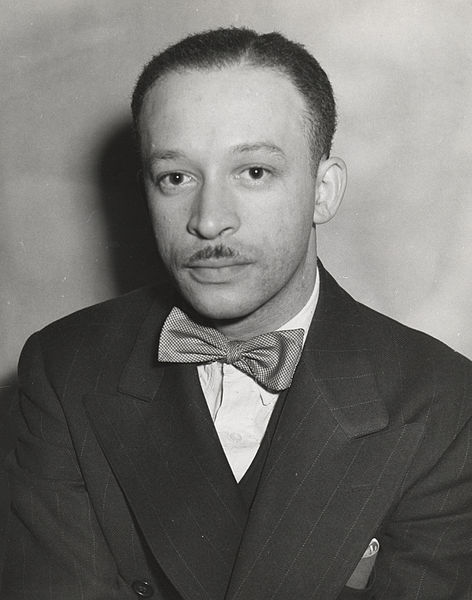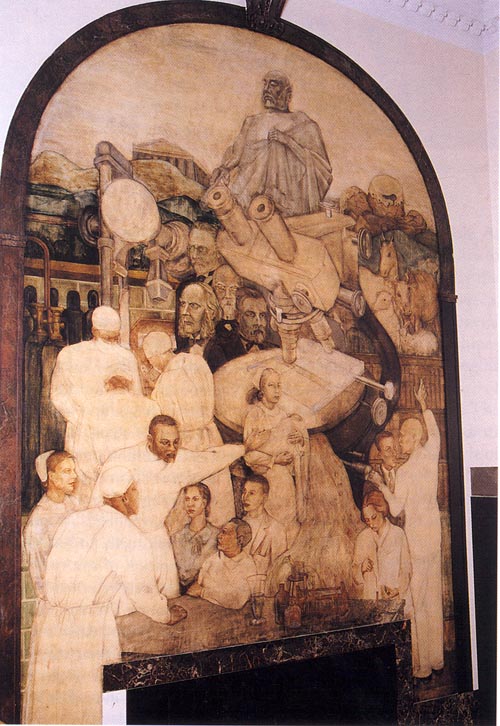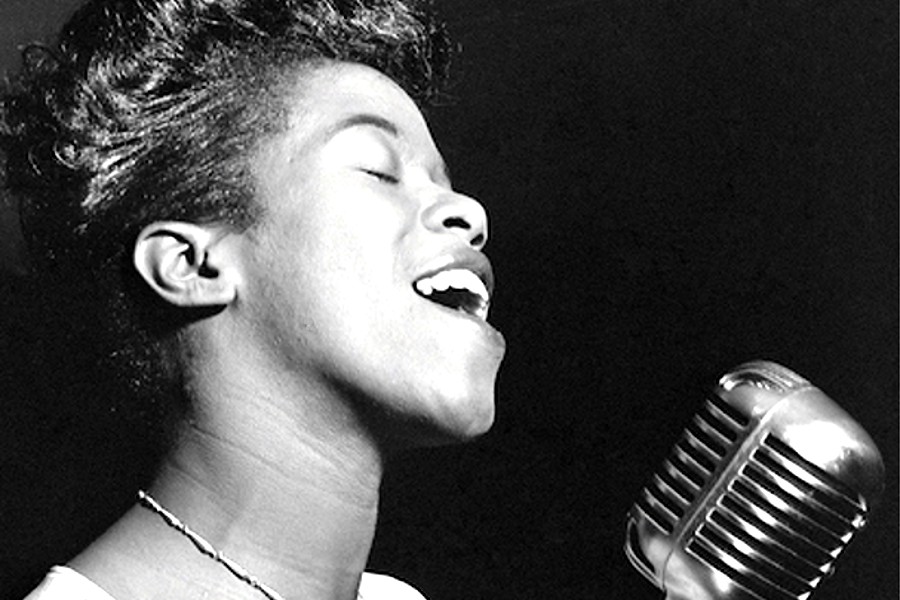 Charles Alston was a renowned African-American artist of the early 1900s. Not only was he a revolutionary painter, but he was a sculptor, a muralist and also a very influential teacher. Alston did not just stick to one kind of style, as he was an experimenter. He indulged into both figurative and abstract paintings. The themes his artwork revolved around were African-American history to urban and rural life to personal and family experiences and more. As a teacher, he tried to instill his students with the same ideas of experimentation and design. The art critic Emily Genauer stated that Altson “refused to be pigeonholed.” This explains that he was a versatile genius who ventured into many domains. Alston really worked towards improving the cultural life of Harlem, the town where he was brought up. He bridged the gaps between the Black artists and other Americans and worked towards elevating the position of the African-Americans in the cultural society. Charles Alston was a truly great artist and he most certainly was a people’s man.
Charles Alston was a renowned African-American artist of the early 1900s. Not only was he a revolutionary painter, but he was a sculptor, a muralist and also a very influential teacher. Alston did not just stick to one kind of style, as he was an experimenter. He indulged into both figurative and abstract paintings. The themes his artwork revolved around were African-American history to urban and rural life to personal and family experiences and more. As a teacher, he tried to instill his students with the same ideas of experimentation and design. The art critic Emily Genauer stated that Altson “refused to be pigeonholed.” This explains that he was a versatile genius who ventured into many domains. Alston really worked towards improving the cultural life of Harlem, the town where he was brought up. He bridged the gaps between the Black artists and other Americans and worked towards elevating the position of the African-Americans in the cultural society. Charles Alston was a truly great artist and he most certainly was a people’s man.
Charles Alston was born on 28 November 1907 in Charlotte, Carolina. His parents were Anna Elizabeth Miller Alston and Reverend Primus Priss Alston. Alston was the youngest amongst five siblings, but unfortunately, only three of them managed to survive after childhood. His surviving siblings were his sister Rousmaniere and his brothers Wendell and Charles. Charles father worked towards the well-being of African-Americans and he nicknamed Charles “Spinky”. Charles father passed away when he was three, but he kept this name until he grew up.
After the death of Charles father, his mother Anna Alston married Harry Bearden. This is how Romare Bearden, an African-American writer himself and Charles Alston became cousins and friends for a lifetime.
Alston was influenced by his brother’s drawings of trains and cars and he tried copying them too. Charles also played with clay while he was young and he sculpted the city of “North Carolina”. Charles family had a great fondness for arts. His mother was an embroiderer and his father wrote impressively illustrated letters to Charles’ mother during their courtship years.
In 1915, Charles’ family moved to New York and took up a house in Harlem.
In 1915, Charles’ family moved to New York and took up a house in Harlem. Charles artistic bends were seen as strength during the times of the Great Depression.
Charles graduated from DeWitt Clinton High School in 1925 where he was the art editor of the schools magazine called ‘The Magpie’. A member of the Arista – National Honor Society, Alston was also a Saturday student at the National Academy of Arts. He chose Columbia University over Yale School of Arts for his undergraduate program. After experimenting with the pre-architectural programs and the pre-med program, Charles chose the fine arts program. He was a member of the fraternity Alpha Phi Alpha, which was the intercollegiate Greek letter organization for African Americans. Charles was also a part of Columbia Daily Spectator and Jester, the school magazine where he drew cartoons. After graduating from Columbia University in 1929 with a B.A. with concentration on fine arts, Charles pursued his further education in Columbia University Teachers College and he received his master’s degree in 1931.
After pursuing his masters, Charles continued working at the Harlem community and he cofounded the Harlem Art Workshop in 1934.
While Charles was still a student, he became an active member of the Harlem Community and the director of a boy’s camp called Utopia House. Here he started an art program before he left back for Columbia to pursue his masters. At the Utopia house, Charles was a mentor to a kid named Jacob Lawrence who was strongly influenced by Alston’s ideas. After pursuing his masters, Charles continued working at the Harlem community and he cofounded the Harlem Art Workshop in 1934. To accommodate more space, the workshop was moved to 306 West 141st Street becoming the center of the creative minds of Harlem. Alston was the first black supervisor for the Federal Art Project in 1935. He was allocated to direct the Harlem’s Hospital Murals. Two of Charles works were then exhibited at the Museum of Modern Art in 1936. By the end of the decade in 1938, Charles received two Rosenwald Fellowships to travel the south. In 1940, Charles completed his portrait named ‘Tobacco Farmer’, which was a depiction of the southern way of living. The second time Charles was funded; he spent it to work with Hale Woodruff at Atlanta University.

During the 1950s, Alston worked towards creating a number of abstract paintings. In 1950 itself, one of Alston’s painting made it to the Metropolitan Museum of Art’s centered on the theme “America Painting Today”. The same year, Charles became one of the first African-American instructors at the Art Students league. In the year 1953, John Heller Gallery gave Alston the chance to have his first solo exhibition. Alston was always an influential person and was a great leader. So, he was made an instructor at the Museum of Modern Art in 1956. Later in 1958, Charles was elected as the member of the American Academy of Arts and Letters.
Along with Romare Bearden, Norman Lewis, Hale Woodruff, and many others, Charles co-founded the Spiral Group in 1963. This group worked towards increasing awareness of black artists. Lyndon Johnson granted Alston with his appointment as a trustee of the Kennedy Center in 1967 and following in 1970 was Charles becoming a member of the New York City Arts Commission. In 1973, he was made a full professor at the City College of New York and Columbia University, which had once barred him from a drawing course because the models were white, honored him with a “Distinguished Alumni Award”.
Charles Alston met his wife when he was working on the mural project at the Harlem hospital. Dr. Myra Adele Logan was an intern there and he soon got married to her in 1944 after he returned from New York. The couple resided in Edgecombe Avenue near Highbridge Park.
In January 1977, Charles wife passed away and within months at the age of 69, Charles too died due to cancer in New York City. After his demise, the Arts Students league created a 21-year merit student scholarship to honor Alston for the years of service.
Photo via commons.
Become a Harlem Insider!
By submitting this form, you are consenting to receive marketing emails from: Harlem World Magazine, 2521 1/2 west 42nd street, Los Angeles, CA, 90008, https://www.harlemworldmagazine.com. You can revoke your consent to receive emails at any time by using the SafeUnsubscribe® link, found at the bottom of every email. Emails are serviced by Constant Contact








